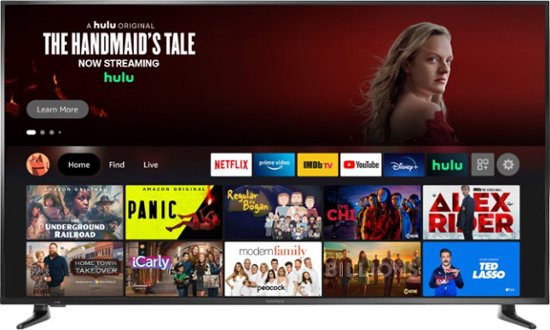What should I consider when searching for a TV?
Over the almost twenty years of this column, I have written several articles about televisions, always in order to provide my readers with guidance to subsidize their purchases, and get the best cost-benefit ratio.
The periodic return to the subject is due to the fantastic evolution in this area, where we have moved from kinescope devices to flat-screen, with an impressive advance in the image, and other by-products such as multichannel sound, internet access, wireless connection, reproduction of photos, music and videos, etc.
For a long time, the only advance of tube televisions was in size. The dream of consumption was a 29-inch flat-screen device, which costed a small fortune. The more affluent had 38-inch models, and bars and nightclubs used huge backprojection models.
At a time when the best media at home was the VCR, there were no greater demands, and many even advocated the use of smaller screens to have a better image. The size and weight were also complicated. I even got to buy a widescreen 32-inch TV that weighed over eighty kilos!
The arrival of DVD, and the first flat-screen devices changed this whole scenario. 42-inch plasma televisions amazed hypermarket clients, because in addition to the fascinating image, the price was comparable to that of a popular apartment!
The entry of LCD panels in the market caused a huge reduction in prices, mainly due to the supply of models in smaller sizes. This offer of televisions at cheaper prices, and the abundance of pirated DVDs popularized what was once a niche restricted to those who could have a home theater. To paraphrase a famous title, the working class had arrived to paradise.
With the popularization of LCD sets, and later, those of LED, plasma lost space and today is just a souvenir to fans of this technology, which offered an image closer to the theater. What is observed from the market is a profusion of models and brands, whose technical specifications are a true soup of letters, which causes a headache for those who are eager to acquire a new model. Asking the seller can be a trap, as usually he also does not understand very much, and will claim absurd things.
What to do, then? In these matters, I have always argued that, before exploring the stores, the buyer candidate should analyze his needs. After all, everyone’s money is sweaty, and must be applied with parsimony and wisdom. Let’s leave to the very rich the option of “buy a home theater just to fill my room”.
The vast majority of people are content with the programming offered by open television or subscription channels. For these, which does not have great image and sound needs, virtually any LCD or LED model will meet, especially with open TVs with digital signal.
The same reasoning applies to those who watch movies from the subscription channels, which are increasingly abundant. Movies are already available on Netflix and Amazon Prime in 4K, which allows for an image quality never before seen when it comes to home cinema. Of course, the sound of the TV, however good it may be, will never be the same as that of a home theater system, especially if the source is a high-quality Blu-Ray disc. This also applies to special effects, especially in digital action scenes.
And if the intention is really to make up a home theater, what would be the appropriate televisions, and what care to take in the acquisition?
Well, unless your room is very small, it’s hardly being serviced by a panel smaller than 42 inches. And since the price has dropped a lot, it’s already possible to find 50-inch models for the price I paid for that 80-kilos dinosaur I mentioned earlier.
Today there are profusion of models with 50, 55, 60, 65 inches and even larger sizes, which are perfect for a medium-sized room, and with a price tag that is still less than a projector and screen structure. Of course, are out of this range the new models OLED, QLED and 8K, which claim to reach eight times the definition of a Blu-Ray.
Even so, an investment of three, four or five thousand reais is a significant value, which deserves great care not to turn into a much greater annoyance than the pleasure expected.
The first care should be with regard to what is really needed. Will the larger use be for movies or for open programming? Are there many equipment to connect? If the person does not have an audio and video receiver, connecting a Blu-Ray, pay-TV tuner or a video game implies different HDMI inputs, the only one that allows sending sound and image data digitally.
The higher the requirement for sound and image quality, the more care you should take. Advertisements will always claim that this model has an additional resource that delivers the best image on the market – which is almost always not true.
Larger and sophisticated equipment can also present defects, some of them systematic, and that cause major headaches. Imagine taking a 65-inch panel to technical assistance… It doesn’t even fit in a normal car.
The great help tool is the internet. Defined one or more models that you want to acquire, search the internet to see people’s opinions. I went through this experience some time ago when I gave up buying a model that had an excellent price, but most users complained of crashes and slow operation.
In these times of globalization, the same models are released worldwide, which is a great help when searching. If your English is ok, put the model code on Google, and the word review, and hundreds or thousands of testimonials from people who bought that device and their impressions will appear. Amazon’s website is already a great starting point.
The market is full of smart televisions, with a thousand-and-one-utilities. It is useless to spend money on a device that does not have this capacity, because nowadays everything is connected or connectable. Many have already retired the various devices that gravitated around the TV because it is possible to watch movies, listen to music, see their photos, etc. all through your TV. The only care should be what a TV should really offer, whatever the technology, a good image.






